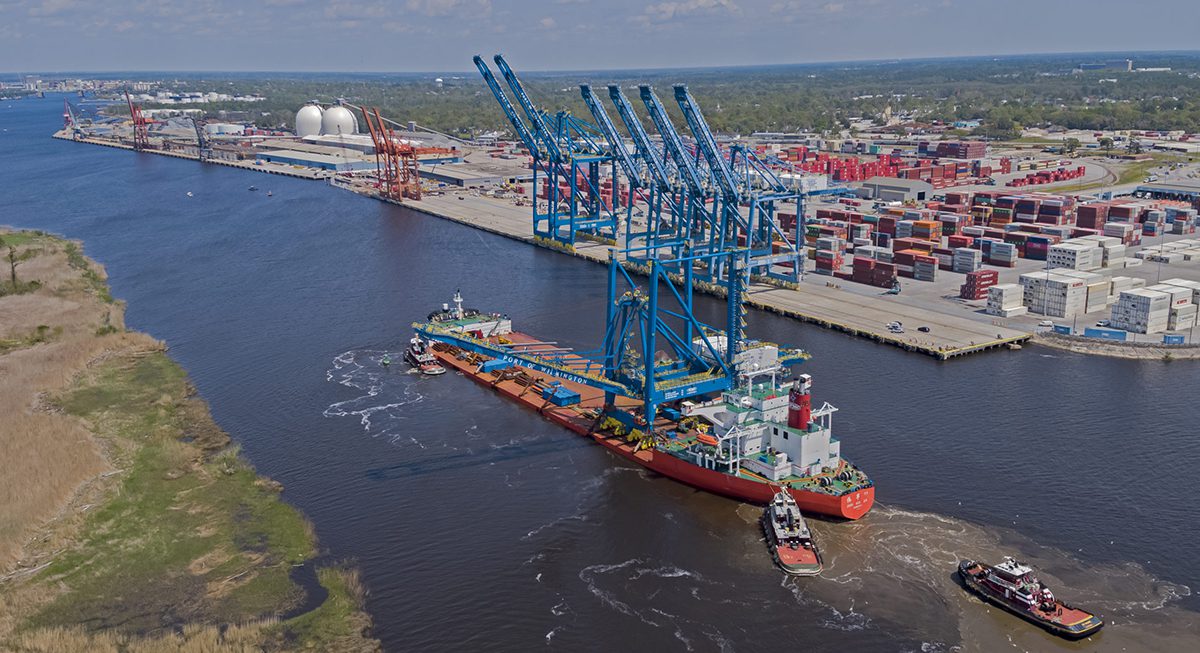
WILMINGTON — North Carolina’s largest river basin faces more than its fair share of threats, advocates say.
The Cape Fear River watershed is the most industrialized in the state. Swine and poultry factory farms, paper and wood pellet mills, chemical plants, yet-to-be cleaned coal ash ponds, countless small dams and several large dams, feed and textile mills, explosive commercial and residential development, and climate change endanger this river basin of about 9,000 square miles and home to about 2 million people.
Supporter Spotlight
Environmentalists and river advocates are taking aim at what they consider to be the latest threat to the lower Cape Fear River — the proposed deepening and widening of the Wilmington Harbor.
Attendees at Cape Fear River Watch’s second annual State of the River forum Thursday were urged to consider the potential impacts to the river’s habitat, the species that rely on that habitat and the communities and cultural resources that line the river’s banks.
The N.C. State Ports Authority’s plan to make room for larger container ships to travel 26 miles from the river’s mouth at the Atlantic Ocean to the Wilmington port would likely change the water, sand and riverside communities, said Hannah Nelson, an associate attorney with the Southern Environmental Law Center’s Chapel Hill office.
“Now is really the perfect time to start thinking through the tough questions on this project,” Nelson said to an audience of dozens gathered at the forum held in Cape Fear Community College’s Union Station building in downtown Wilmington.
The ports authority announced four years ago a proposal to deepen the harbor from 42 feet to 47 feet, widen it in areas by 100 feet up to 300 feet, and extend the ocean entrance to the river from 44 feet to 77 feet.
Supporter Spotlight
Those new depths and widths would allow the Wilmington port to remain competitive with other East Coast ports by making room for larger container ships coming from Asia, according to the state ports authority.
The changes would accommodate large vessels that can carry 14,000, 20-by-8-foot shipping containers that have been traveling through the Panama Canal since its expansion in 2016.
Related: Open house on Wilmington Harbor project set for June 13
But making room for larger ships could exacerbate saltwater intrusion, a phenomenon already occurring with sea level rise, through to the Northeast Cape Fear River, Sturgeon Creek and Town Creek, Nelson said.
“We expect to see this increased salinity throughout the river system,” she said.
Increased salinity is worrisome, Nelson said, because saltwater encroachment will force species to either migrate or altogether cease to exist in the river, kill off freshwater plants and habitat and destroy wetlands, which are nature’s storm buffers.
The proposed project is also expected to change the river’s tidal range and increase the mean high water level throughout the channel because the project would reduce the speed at which the water flows, she said.
Millions of cubic yards of sand will have to be removed, destroying nearly 1,000 acres of soft-bottom habitat and converting that habitat into deepwater habitat. Many of those acres make up primary nursing area for juvenile fish, Nelson said.
“If we dig all of that up, it can no longer be suitable for those young fish,” she said.
Sea turtles, including endangered loggerheads, rest and forage on the floor of the harbor. Bigger ships could increase erosion rates on the river banks, threatening recreational use of the river, shorebird habitat, communities, including environmental justice communities, and cultural resources.
There’s also concern that the sand that would be moved during construction of the proposed project could be laden with per- and polyfluoroalkyl substances, or PFAS, which are human-made chemicals that have contaminated the river, the raw drinking water source for tens of thousands of people in the region, for decades.
Other possible impacts to communities on both sides of the harbor are increased vehicle traffic transporting containers, noise and land development.
“We’ve seen this play out in our neighboring states,” Nelson said.
Land in both Georgia and South Carolina on either side of the Savannah Harbor has experience a building boom of industrial warehouses since that harbor’s expansion project wrapped last year.
Nelson said that between 2019 and 2022, 77 warehouses of various sizes were built in the area around the expansion.
“These are just a couple of the environmental impacts that could happen with this project,” she said. “We don’t have to continue down the path of deepening and deepening and deepening because that’s what we’ve already done.”
The project received authorization under the Water Resources Development Act in late 2020.
Nonfederal-sponsored projects, such as those led by states or state agencies like the ports authority, have to get federal authorization before moving forward. In order to receive federal funds, projects must undergo an environmental assessment known as the National Environmental Policy Act, or NEPA process, which is headed by the U.S. Army Corps of Engineers.
The Corps is partnering with the ports authority to develop the Wilmington Harbor Clean Water Action Section 403 letter report and environmental impact statement, or EIS, which are estimated to cost $8.5 million and be completed in four years.
The public will have an opportunity to speak with Corps representatives submit comments at an open house next week hosted by the Corps’ Wilmington District. Public comments will be accepted through June 30.
The open house is scheduled to begin at 4 p.m. June 13 in the Union Station building, 502 N. Front St.
For more information about the project and to submit comments visit https://wilmington-harbor-usace-saw.hub.arcgis.com/








